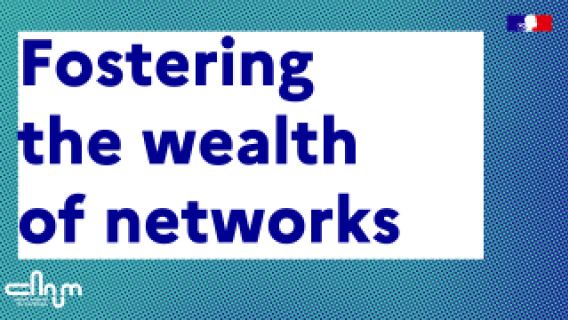From deep attention to hyper attention, inteview of Katherine Hayles
Katherine Hayles is a distinguished Research Professor. She wrote How We Think. Digital Media and Contemporary Technogenesis (2016). She explains the shift from deep attention to hyper attention, the role of digital technologies, and the role that education to preserve attention.
What is the distinction between deep attention and hyper attention?
In my 2017 book, I did a lot of research in cognitive sciences and neurosciences on executive functions of consciousness, which means how our consciousness directs attention. A lot of collaborating research indicates a shift from deep attention to hyper attention. While deep attention is characterized by a focus on a single object - such as reading a long novel -, hyper attention is characterized by a higher level of boredness, which means that people get bored easily, tend to multiply information streams and switch quickly from one to another.
Yet, there is a research indicating that when people adopt a multitasking approach to their work, it takes them longer to move to the next thing. Indeed, research indicates that focus is unitary, which means that you cannot focus on more than one thing at a time. The part of the consciousness that is responsible for creating this focus is like a spotlight, it only shines on one thing at a time, even if you can shift it very quickly. However, in practice, even if multitasking is less efficient, some people prefer this approach because they like the stimulation from multiple information sources.
What could be the impact of digital technologies on the shift to hyper attention?
First of all, the controversy on screen time affecting young children is a vital issue because of their brain plasticity, which is maximum at birth and gradually solidifies. During the first years of life, children’s synaptic networks are essentially being rewired to fit their environment, so that every child has the ability to accommodate to every environment. Their pace of life and living environment will affect their whole cognitive structure in many ways.
In this regard, digital technologies may raise several issues. Beyond the fact that there is very little unstructured time for children - while they need time to discover the world on their own - it is fundamental for children to directly interact with the world through their senses and by manipulating objects, not through screens. If the majority of their experiences are mediated through a screen, they are creating different kinds of cognitive structures. Indeed, as the pace becomes faster and the experiences become more and more virtual, one of the things that happens is that children get bored very easily. If they are used to continuous stimulation from screens, as soon as this stimulation stops, they start to complain. Even if some virtual experiences are conducive to concentration, such as video games where young people can engage for hours, the reward structure of video games is very artificial, it is programmed to give them quick dopamine reward. Life is not like that, you do not get rewards on a regular schedule, sometimes you have to wait for years… And the capacity to do that, the cognitive structure to do that, has been partially diminished by the shift to hyper attention.
It is fundamental for children to directly interact with the world through their senses and by manipulating objects, not through screens.
What could be the role of education to avoid these issues?
The issue is not digital technology as such but how we approach it in the educational context.
Firstly, I would lay down as a general principle that children under 10 are not given screens at school. In this regard, there are some private schools that emphasize exploration through children’s senses, and they certainly do not give their students tablets, but encourage them to go outside, using their body to do or create something.
Secondly, when older children are given digital devices, the school programs should include advices on how to use them, not only a manual. I think it is a big mistake to give digital devices to kids as if they were black boxes. The technology itself should be interrogated and not taken as a given but considered as an object of design. It is important to teach and emphasize that these artifacts are designed on the basis of choices that do not necessarily coincide with our needs. The more young people will understand technologies, the more they will have the opportunity to be active and interrogate what is going on. In practice, one way to make students shift from being passive to active recipients is to emphasize their own ability to create things. It is not only about using software packages but also about learning how to program and create modifications... We should emphasize the fact that technology is designed and that they can change the design, take control of the desktop through software packages, especially for high school and college students. The more they learn about how the device is designed, the more they will know how to resist, because they will understand that they are being manipulated.
It is important to teach and emphasize that these artifacts are designed on the basis of choices that do not necessarily coincide with our needs.
Thirdly, if we use it as teachers, we should explicitly explain to our students how to read digital work. Indeed, digital does not mean it is superficial. What is different is that, for digital work, students will come with very different expectations. At UCLA, I asked my students to read Mary Shelley’s Frankenstein, in conjunction with an electronic work (Patchwork girl, Shelley Jackson). They understood that reading the actual book would take 10-12 hours and requested a lot of attention, but they scrolled through the electronic work and spent less than half an hour on it, while this latter work was actually far more complex. Our first discussion on this electronic work was just pathetic compared to our discussion on the book. It is up to us, as teachers, to set their minds in the correct disposition to apprehend such pieces of electronic work.
How to ensure that these good practices are followed by the educational system?
It seems to me that the place to start is with the educators because this is where you can have the most programmatic improvements, and then from the educators to the parents. It might also be interesting to get technical designers involved at school. Another great source are artists, because they always try to make things their own; having a strong art curriculum in school which invites to modele this kind of approach towards technology appears to me as an important aspect.
More generally, I think educators should certainly be trained on the media’s influence on how we think and reflect. The real issue for me here is to prevent the robbery of young people’s ability to be creative and critical, which is what this technology is designed to do. It is important to foster these abilities rather than suppress them.









